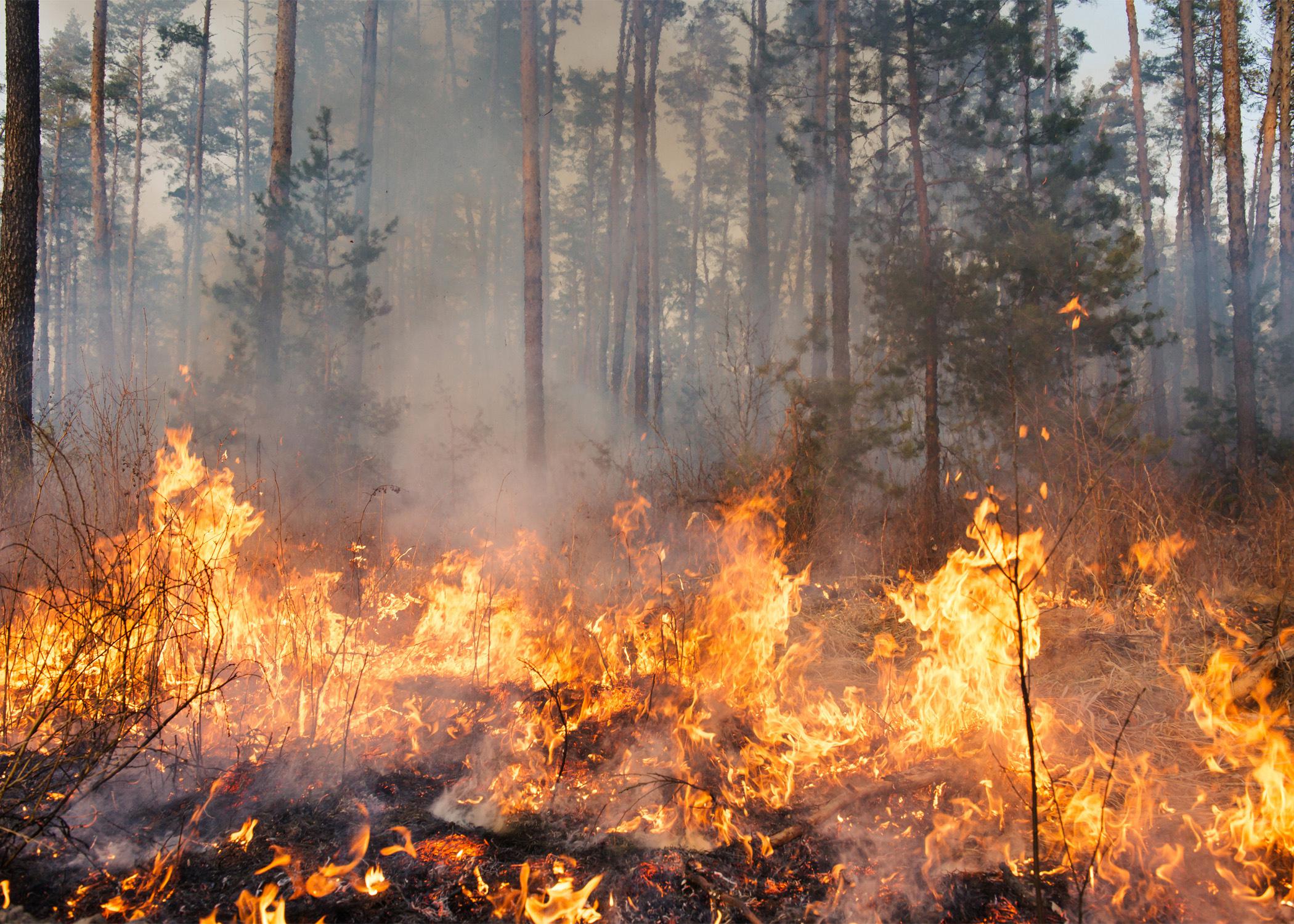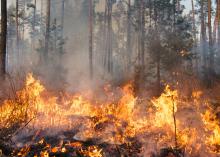Take steps to protect property from wildfire
RAYMOND, Miss. -- While wildfires may not seem like a threat to Mississippians and their property, they certainly can be. And residents should take precautionary steps to protect themselves.
“It’s a rare year when we don’t rank in the top half of all states in terms of number of wildfires,” said Butch Bailey, Extension forestry specialist with the Mississippi State University Extension Service.
“The difference between wildfires here and wildfires in the West is due to our humid climate and frequent rainfall, which is relatively spread out all year. Our wildfires tend to not be as catastrophic or as long-lasting. But they do happen here all the time.”
Those wildfires often threaten homes and other properties.
Mississippi had 2,502 wildfires that burned 52,982 acres, according to the 2024 annual report of the Mississippi Forestry Commission, the agency responsible for responding to and suppressing wildfires. MFC wildland firefighters saved 5,000 structures from those fires.
Most Mississippians live in the rural-urban interface, which increases their risk of being affected by wildfire. The rural-urban interface occurs where human development moves into rural areas.
As spring approaches, the risk of wildfires increase because vegetation is dry, humidity is low and winds are high. Once spring arrives, the flush of new plant growth provides a lot of potential fuel for fires. Historically, wildfires occur most often in February, March and April in Mississippi.
“When we have bad fire outbreaks in the spring, it’s often when we have a dry period following the spring flush of growth,” Bailey said.
However, property owners can take preventive steps to help protect their homes from wildfires. The National Fire Protection Association’s Firewise USA program is based on decades of research and outlines simple ways to increase a home’s chances of surviving wildfires.
Homes and other structures should have 30 to 100 feet of defensible space. This space is the area between the foundation and an oncoming wildfire and is referred to as the home ignition zone. The amount of defensible space needed depends on the slope of the property and the types and amounts of vegetation in the landscape and surrounding the property.
Within the first 30 feet of the foundation, homeowners should maintain a healthy, well-watered landscape with little to no dead vegetation or flammable materials. Use soaker hoses to keep fiber mulch and landscape plants hydrated during periods of low-humidity or dry weather.
Vegetation located within 50 to 100 feet of the home should be broken up and “ladder fuels” should be removed. Ladder fuels are any type of staggered vegetation, such as low branches draped with dead pine needles, that allow fire to move from the ground higher into a tree. Keeping the recommended amount of space between trees and other plants helps slow down the spread of an approaching fire.
Sometimes this zone should extend 200 feet, depending on the slope of the land and the vegetation, said Orlando Ellerby, MFC Firewise coordinator.
“Mississippi is 75% rural. And even if you live in a municipality, you may be at risk of having damage from wildland fire,” he said. “If you are building a home in a subdivision that backs up to a heavily wooded area, it’s important for you to incorporate the Firewise principles into your property.”
The simplest way to reduce fire risk is by paying attention to the area immediately around the home.
“Inspect your gutters, roofs, flowerbeds, decks and your yard for anything that can be fuel for a fire. Clean out any flammable materials, including leaves, pine straw and dead plant material, from these areas. Make sure your plants and grass are alive and healthy. Keep firewood a good distance from your home, and if possible, place it on concrete or bricks.”
After the state’s recent severe drought conditions, Ellerby said any dead trees in the landscape or adjacent to the landscape should be removed.
“Those are fuel for a fire,” he said. “All it would take is a lightning strike or an ember from a nearby fire to ignite that tree. You might be at work when that spark ignites on your property, and by the time you get home, you’ve got a pretty big fire that is threatening your home.”
Ellerby said other buildings, such as sheds and hunting lodges, should also be considered.
“A lot of people don’t think about a fire happening at their hunting lodge, but those properties are at risk, too,” he said.
The same principles apply for protecting these types of structures. Maintain the defensible space by keeping the presence of potential fuels as low as possible.
Most wildland fires ignite from escaped debris burning, Ellerby said. Always wait until the fire is completely out before leaving. The MFC recommends obtaining a permit for certain types of agricultural and forestry burning. Other types of burning require a permit and are governed by the Mississippi Prescribed Burning Act. For more information, visit the MFC website at http://www.mfc.ms.gov/burning-info.
Ellerby’s top three recommendations for protecting an existing property from fire are keeping debris off the roof and out of gutters, installing a fire-break barrier on the property perimeter and inspecting the outside of the home for areas that embers could lodge and ignite.
“If you need to replace your roof, consider a metal roof. It is more expensive but can provide better protection,” Ellerby said. “When grass is brown in the winter, plant a barrier of ryegrass around the property. Look at the siding and around windows and doors and any other areas where embers could lodge and ignite the home.
“It’s the simple things that don’t cost a lot that can do a lot to help protect your property from fire.”
Both Ellerby and Bailey pointed out that people often overlook posting the home’s address so that it is clear and easily visible from the road, as well as making sure driveways have enough clearance for firefighting equipment. Both are critical in an emergency.
Naturally occurring fires are an inherent part of Mississippi’s landscape, Bailey said.
“It’s important to keep in mind that basically all of the uplands in Mississippi, which is all the areas not in a swamp or river bottom, are a naturally fire-maintained ecosystem,” Bailey said. “Natural fires are common.
“Scientists estimate that any upland area of Mississippi would have seen frequent, low intensity fires every year or two prior to European settlement. Our forests are adapted to fire, and we should expect it. It’s incumbent on us as landowners and homeowners to protect our property and ourselves.”
MFC provides home assessments to help people understand how to apply Firewise principles to their properties. For more information about the Firewise USA program or to schedule a home assessment, visit http://www.mfc.ms.gov/wildfires.









